Research resource: Comprehensive expression atlas of the fibroblast growth factor system in adult mouse
- PMID: 20667984
- PMCID: PMC2954642
- DOI: 10.1210/me.2010-0142
Research resource: Comprehensive expression atlas of the fibroblast growth factor system in adult mouse
Abstract
Although members of the fibroblast growth factor (FGF) family and their receptors have well-established roles in embryogenesis, their contributions to adult physiology remain relatively unexplored. Here, we use real-time quantitative PCR to determine the mRNA expression patterns of all 22 FGFs, the seven principal FGF receptors (FGFRs), and the three members of the Klotho family of coreceptors in 39 different mouse tissues. Unsupervised hierarchical cluster analysis of the mRNA expression data reveals that most FGFs and FGFRs fall into two groups the expression of which is enriched in either the central nervous system or reproductive and gastrointestinal tissues. Interestingly, the FGFs that can act as endocrine hormones, including FGF15/19, FGF21, and FGF23, cluster in a third group that does not include any FGFRs, underscoring their roles in signaling between tissues. We further show that the most recently identified Klotho family member, Lactase-like, is highly and selectively expressed in brown adipose tissue and eye and can function as an additional coreceptor for FGF19. This FGF atlas provides an important resource for guiding future studies to elucidate the physiological functions of FGFs in adult animals.
Figures
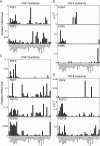
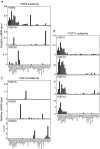
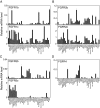

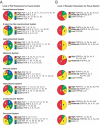
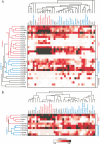
References
-
- Gospodarowicz D 1974 Localisation of a fibroblast growth factor and its effect alone and with hydrocortisone on 3T3 cell growth. Nature 249:123–127 - PubMed
-
- Itoh N 2007 The Fgf families in humans, mice, and zebrafish: their evolutional processes and roles in development, metabolism, and disease. Biol Pharm Bull 30:1819–1825 - PubMed
-
- Itoh N, Ornitz DM 2004 Evolution of the Fgf and Fgfr gene families. Trends Genet 20:563–569 - PubMed
-
- Itoh N, Ornitz DM 2008 Functional evolutionary history of the mouse Fgf gene family. Dev Dyn 237:18–27 - PubMed
Publication types
MeSH terms
Substances
Grants and funding
- AG19712/AG/NIA NIH HHS/United States
- DK067158/DK/NIDDK NIH HHS/United States
- U19 DK062434/DK/NIDDK NIH HHS/United States
- T32 GM007062/GM/NIGMS NIH HHS/United States
- 1RL1GM084436-01/GM/NIGMS NIH HHS/United States
- P20RR20691/RR/NCRR NIH HHS/United States
- DE13686/DE/NIDCR NIH HHS/United States
- R01 DE013686/DE/NIDCR NIH HHS/United States
- RL1 GM084436/GM/NIGMS NIH HHS/United States
- GM007062/GM/NIGMS NIH HHS/United States
- P20 RR020691/RR/NCRR NIH HHS/United States
- HHMI/Howard Hughes Medical Institute/United States
- R01 AG019712/AG/NIA NIH HHS/United States
- U19DK62434/DK/NIDDK NIH HHS/United States
- R01 DK067158/DK/NIDDK NIH HHS/United States
LinkOut - more resources
Full Text Sources
Other Literature Sources

